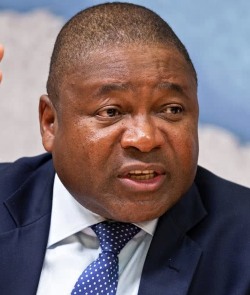 The Republic of Mozambique (or "Mozambique" for short), is a south-eastern African bordering the Republic of Zimbabwe to the west, the Republics of Zambia and Malawi to the Northwest, the Republic of South Africa and the Kingdom of Swaziland ( Eswatini) to the southwest. Mozambique also borders the Indian Ocean to the east.
The Republic of Mozambique (or "Mozambique" for short), is a south-eastern African bordering the Republic of Zimbabwe to the west, the Republics of Zambia and Malawi to the Northwest, the Republic of South Africa and the Kingdom of Swaziland ( Eswatini) to the southwest. Mozambique also borders the Indian Ocean to the east.
The Republic of Mozambique has a total land area of about 799,380 squared kilometers (about 13,000sq km of which is covered by water). Just about 6.5% of the total land area of Mozambique remains arable (land good for farming).
Mozambique has an estimated population of 33 million people with the population growth rate hovering around 2.5%. Mozambique is mostly rural with about 62% of the population living in rural areas. Those living in rural areas are mostly subsistence farmers who grow crops and rear animals just to feed themselves and their families.
The remaining 38% of the population of Mozambique lives in urban areas in major cities and towns such as Maputo the capital. Maputo city has a population of about 1.3 million people with an estimated metropolitan area population of 3 million people. Matola, the largest surburb of Maputo, is home to about 1.2 million people. Mozambique’s annual urbanization rate hovers around 4%.
Mozambique is predominantly black African with the major ethnic groups Makhuwa, Tsonga, Lomwe, Sena, etc. making up about 99.7% of the total population. Europeans, Euro-Africans, Indians and the other minor groups make up the remaining 0.3% of the population.
Mozambique, just like its neighboring countries, is blessed with abundance of natural resources such titanium, natural gas, coal, hydropower, tantalum, graphite, etc.
However, despite the abundance of natural and humans resources, the Republic of Mozambique remains one of the poorest countries in Africa today with about 50% of its population living below poverty line. A recent UNDP Human Development multidimensional Poverty Index (developed by Oxford University) put this number around 70% of the total population and included the "moderately poor". The multidimensional poverty index viewed poverty from several different angles rather than just the usual GDP figures.
About 81% of the total population of Mozambique is into agriculture. Meanwhile, agriculture makes up just around 29% of the total GDP. The reason is that, most of the 81% are poor subsistence farmers who grow crops and rear animals just to feed themselves and their families.
Although, the “official” unemployment rate in Mozambique today hovers around 21%, about 50% of the total population lives below poverty line which implies the employed are either inadequately employed or underemployed.
Mozambique has a literacy rate of about 47.8% for the entire population with the female literacy rate hovering around 32.2%. Thich implies just about 32.2% of Mozambique's total female populatoin above the age 15 can read and write which is very bad. In fact, this is one of the worst literacy rates in Africa today.
The poor literacy rate in Mozambique is a major contributing factor to the high level of teenage pregnancy cases and the very high HIV/AIDS adult prevalence rate in Mozambique today.
Mozambique has an HIV/AIDS adult prevalence rate of 12.1% (which is one of the worst in the world today). In 2009, about 1.4 million people were living with HIV/AIDS in Mozambique with about 74,000 deaths recorded within the same year. Little has changed.
Apart from the deadly HIV/AIDS, diseases such as malaria, schistosomiasis, protozoal diarrhea, hepatitis A, yellow fever and rabies continue to destroy several lives in Mozambique today.
Just like in most other African countries today, corruption and poor governance continue to tear Mozambique apart.
